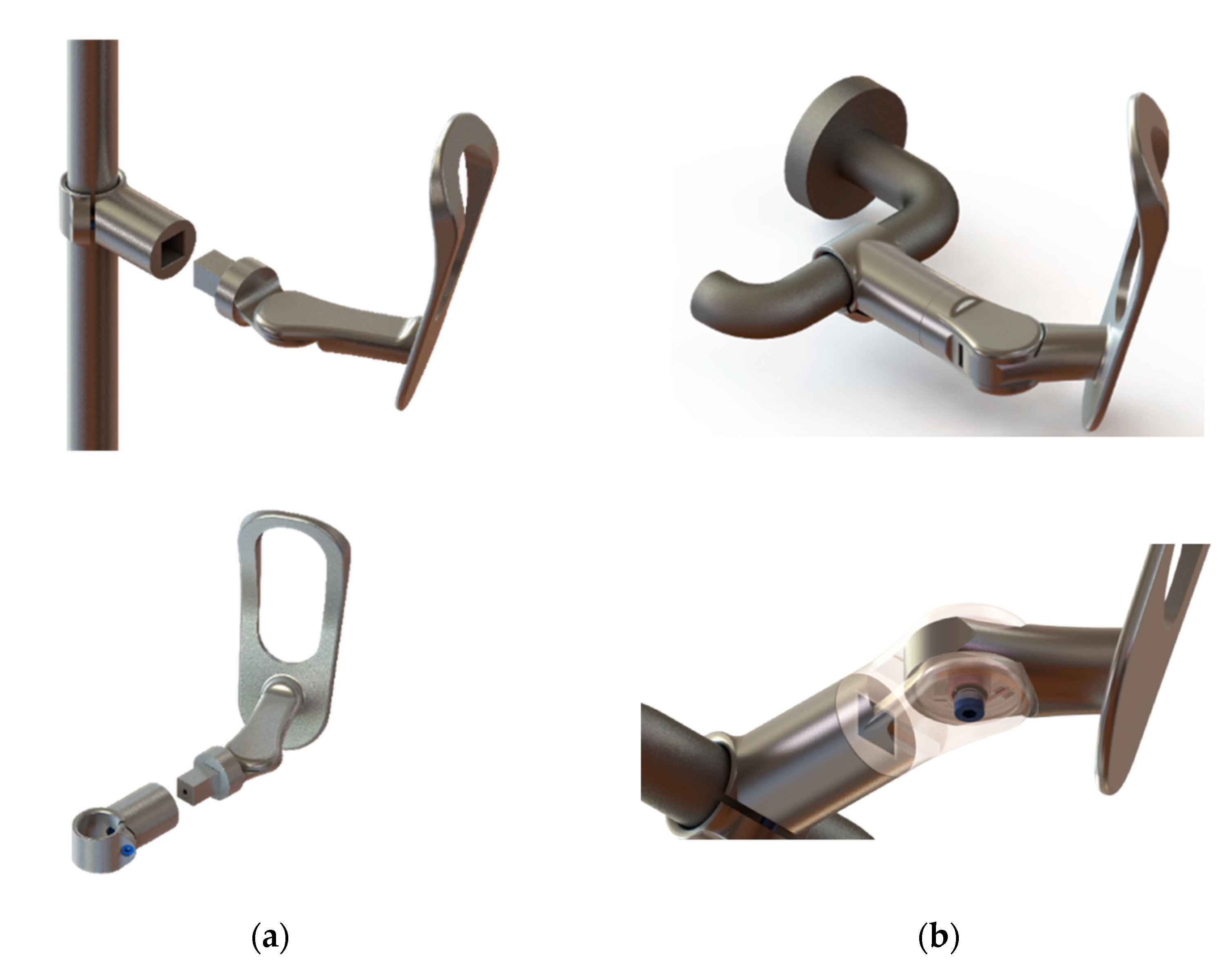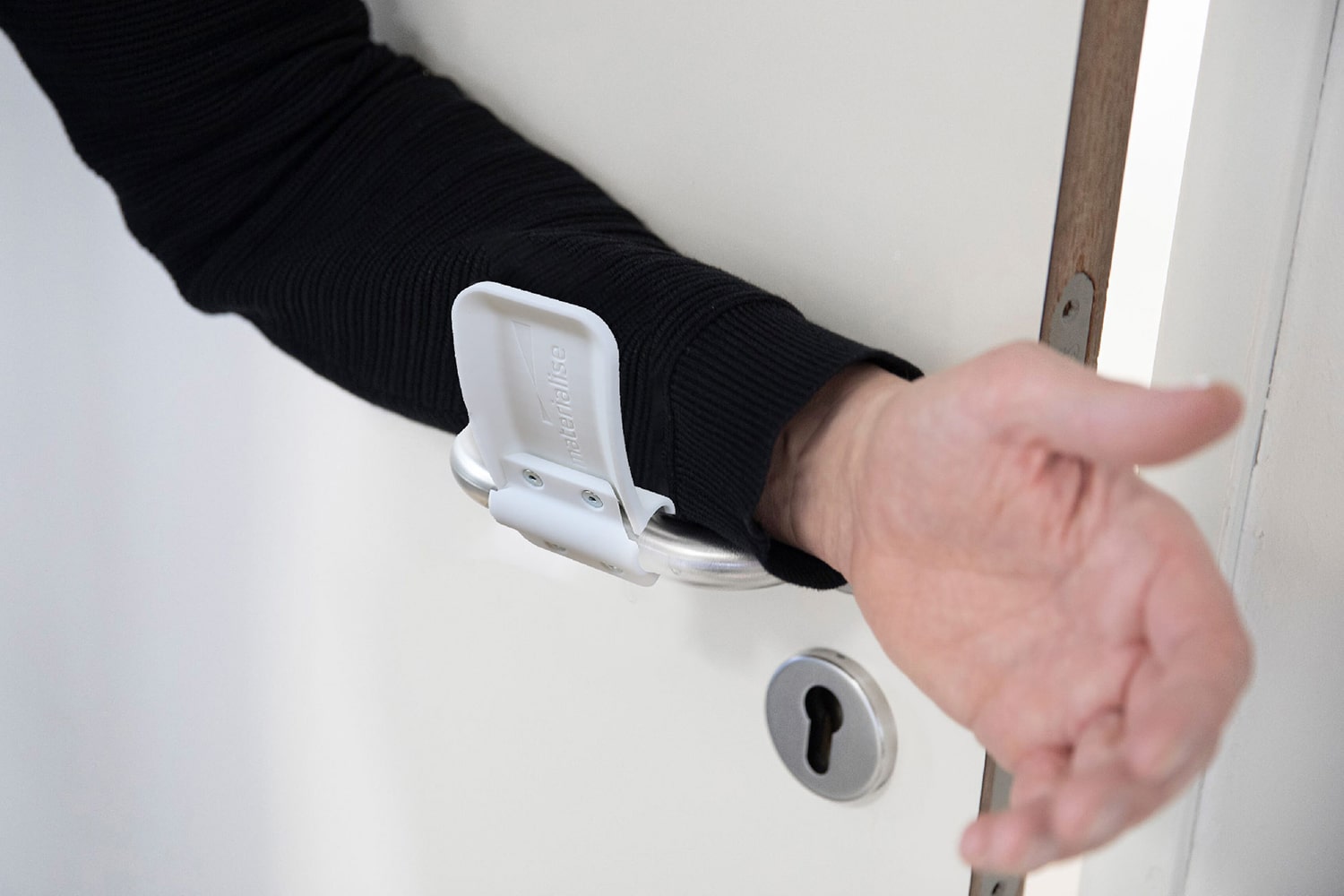Product Overview and Features

The foot-operated cabinet door opener represents a simple yet elegant solution to a common problem: the need for hands-free access to frequently used cabinets. Imagine a world where opening kitchen cupboards, medicine cabinets, or even those under-sink storage units is a seamless, hygienic process, requiring no awkward contortions or messy hand-to-surface contact. This innovative device makes that a reality, offering convenience and improved hygiene in various settings.
The mechanism is surprisingly straightforward. Most models utilize a sturdy, typically metal, lever arm connected to a robust spring mechanism. A gentle push of the foot against the lever activates the spring, which in turn either pulls or pushes the cabinet door open. The specific action (push or pull) depends on the model and its installation orientation. The return mechanism, often involving the same spring or a separate counter-spring, ensures the door closes smoothly after use. Materials range from simple, durable steel to more sophisticated, corrosion-resistant alloys, depending on the intended environment and price point.
Types of Foot-Operated Cabinet Door Openers
Different types of foot-operated cabinet door openers cater to various needs and aesthetics. Material choices significantly influence both durability and cost. Steel is a common choice for its strength and affordability, while more expensive models may utilize stainless steel for superior corrosion resistance, particularly in damp environments like bathrooms or kitchens. Mounting styles also vary. Some models are designed for surface mounting, attaching directly to the cabinet and floor, while others are recessed, integrating more seamlessly into the cabinet’s design. The choice depends on the available space, aesthetic preferences, and the cabinet’s construction.
Comparison of Different Models
The following table compares four hypothetical models of foot-operated cabinet door openers, highlighting their key features, price ranges, and materials. These are illustrative examples and actual market prices and specifications may vary.
| Model Name | Features | Price Range | Material |
|---|---|---|---|
| EasyStep | Surface mount, steel lever, strong spring mechanism | $20 – $30 | Steel |
| CleanTouch Pro | Recessed mount, stainless steel lever, adjustable spring tension | $40 – $60 | Stainless Steel |
| FootAccess Deluxe | Surface mount, heavy-duty steel, non-slip foot pedal | $50 – $75 | Steel with rubberized foot pedal |
| HygieneFirst | Recessed mount, antimicrobial coated stainless steel, quiet operation | $70 – $90 | Antimicrobial coated Stainless Steel |
Installation Process
Installing a typical foot-operated cabinet door opener is generally straightforward, but careful attention to detail is crucial for optimal functionality and safety. This section details the installation process for a surface-mount model.
First, carefully measure and mark the location for the mounting bracket on the cabinet door and the floor. Ensure that the lever arm will have sufficient clearance to operate freely without interference. A clear, detailed illustration would show the placement of the bracket on the door, usually near the bottom edge, and the corresponding location on the floor, ensuring alignment with the door’s opening arc. The illustration would also depict the positioning of the lever arm relative to the door’s hinges and its resting position when the door is closed.
Next, firmly attach the mounting brackets to both the cabinet door and the floor using appropriate screws, ensuring they are securely fastened and aligned. Again, an illustration would show this step clearly, perhaps with a close-up of the screw holes and a suggestion of using a level to ensure perfect alignment.
Finally, carefully attach the lever arm to the mounting brackets, ensuring it moves freely and engages with the door mechanism smoothly. A final illustration would depict the fully assembled unit, with clear labeling of the lever arm, mounting brackets, and the point of contact with the cabinet door. The illustration would also highlight any adjustable components, such as spring tension adjustment screws, indicating how to adjust them for optimal performance. Tighten all screws securely, and test the functionality thoroughly before use. Proper installation is key to the longevity and effectiveness of the foot-operated cabinet door opener.
Benefits and Applications: Foot Operated Cabinet Door Opener

The foot-operated cabinet door opener represents a significant advancement in hygiene and accessibility, offering a practical solution across a diverse range of settings. Its simple yet ingenious design translates into tangible benefits, improving efficiency and promoting a safer, cleaner environment. The advantages extend beyond mere convenience, impacting operational costs and contributing to a more inclusive workspace.
The core benefit lies in the elimination of hand contact with door handles, a crucial factor in maintaining hygiene standards. This is particularly relevant in environments where contamination is a serious concern, reducing the spread of germs and improving overall sanitation. Furthermore, the hands-free operation enhances accessibility for individuals with mobility limitations or those working in environments requiring sterile conditions. The ease of use minimizes physical strain and promotes a more efficient workflow.
Hygiene Enhancement in Healthcare and Food Service
In healthcare facilities, minimizing the spread of infection is paramount. A foot-operated cabinet door opener provides a crucial barrier against cross-contamination, allowing medical professionals to access supplies and equipment without compromising hygiene protocols. Similarly, in food service environments, maintaining stringent cleanliness standards is vital for food safety. The hands-free operation prevents the transfer of bacteria from hands to frequently touched surfaces, ensuring a cleaner and safer food preparation area. Imagine a busy hospital kitchen: the quick, clean access to supplies afforded by the foot-operated opener significantly reduces the risk of contamination. Consider also a surgical suite; the reduction in touch points directly impacts the chances of infection.
Accessibility and Inclusivity
The design of this opener inherently improves accessibility for individuals with disabilities. People with limited hand mobility or those recovering from injury can easily access cabinets and drawers without needing to use their hands. This promotes inclusivity and ensures that everyone can participate in the workplace or at home with ease. For instance, a person using a wheelchair can effortlessly access frequently used items without assistance, fostering independence and dignity. This same accessibility benefit extends to individuals with arthritis or other conditions that limit hand dexterity.
Industries Benefiting from Foot-Operated Cabinet Door Openers, Foot operated cabinet door opener
The versatility of this product makes it beneficial across a wide range of industries. Below is a list showcasing its application and the reasons behind its effectiveness.
- Healthcare: Reduces cross-contamination in hospitals, clinics, and laboratories, improving patient safety and reducing infection rates.
- Food Service: Maintains hygiene standards in kitchens and food preparation areas, minimizing the risk of foodborne illnesses.
- Industrial Settings: Enhances safety and efficiency in environments where hand hygiene is crucial, such as manufacturing plants or chemical laboratories.
- Pharmaceutical Industry: Supports strict cleanliness requirements during drug manufacturing and handling, ensuring product purity.
- Research Laboratories: Facilitates safe access to chemicals and equipment, reducing the risk of spills and contamination.
The advantages of this opener extend beyond specific industries; it offers a simple, yet profoundly impactful solution for enhancing hygiene, accessibility, and overall efficiency. Its adoption represents a significant step toward creating a safer and more inclusive environment across various sectors.
Maintenance and Troubleshooting

Keeping your foot-operated cabinet door opener in tip-top shape is easier than you might think. A little regular attention will ensure years of smooth, silent operation, preventing those frustrating moments when you need access and the mechanism lets you down. Think of it like a well-loved pair of shoes – a bit of care goes a long way.
Regular maintenance involves a simple cleaning and lubrication routine. Neglecting this can lead to sticky mechanisms, noisy operation, and eventually, failure. Just as a well-oiled machine runs smoothly, so too does your cabinet opener benefit from a little preventative care.
Cleaning and Lubrication Procedure
First, disconnect the power supply to the opener. Safety first! Then, using a soft brush or compressed air, gently remove any dust, debris, or food particles that might have accumulated around the mechanism. Pay close attention to the hinges and moving parts. Next, apply a small amount of silicone-based lubricant to the moving parts, focusing on the hinges and any points of friction. Avoid using oil-based lubricants, as these can attract more dust and grime. After lubrication, gently work the mechanism a few times to distribute the lubricant evenly. Finally, wipe away any excess lubricant with a clean cloth. Remember, a little goes a long way; too much lubricant can attract dirt and cause problems. This whole process should take no more than five minutes, and the reward is a smoothly operating opener.
Troubleshooting Common Problems
Troubleshooting issues with your foot-operated cabinet door opener often involves a systematic approach. Begin by checking the power supply – is it properly connected? Next, inspect the mechanism itself for any visible obstructions or damage. A thorough visual inspection can often pinpoint the source of the problem. If the problem persists, refer to the troubleshooting guide below for specific solutions.
Potential Problems and Solutions
Foot operated cabinet door opener – The following list details common problems and their solutions. Addressing these issues promptly will keep your cabinet opener functioning efficiently and reliably.
- Problem: Door opens slowly or sticks. Solution: Clean and lubricate the mechanism, paying special attention to the hinges and moving parts. Check for any obstructions.
- Problem: Door fails to open. Solution: Check the power supply and ensure the opener is properly connected. Inspect the mechanism for any damage or obstructions. Try gently working the mechanism to see if it’s jammed.
- Problem: Noisy operation. Solution: Lubricate the moving parts with silicone-based lubricant. Check for loose screws or components.
- Problem: Mechanism feels stiff or difficult to operate. Solution: Clean and lubricate the mechanism. Inspect for any bent or damaged components.
- Problem: Door doesn’t close completely. Solution: Adjust the door alignment or check for any obstructions preventing complete closure. Check the mechanism for any damage or misalignment.
